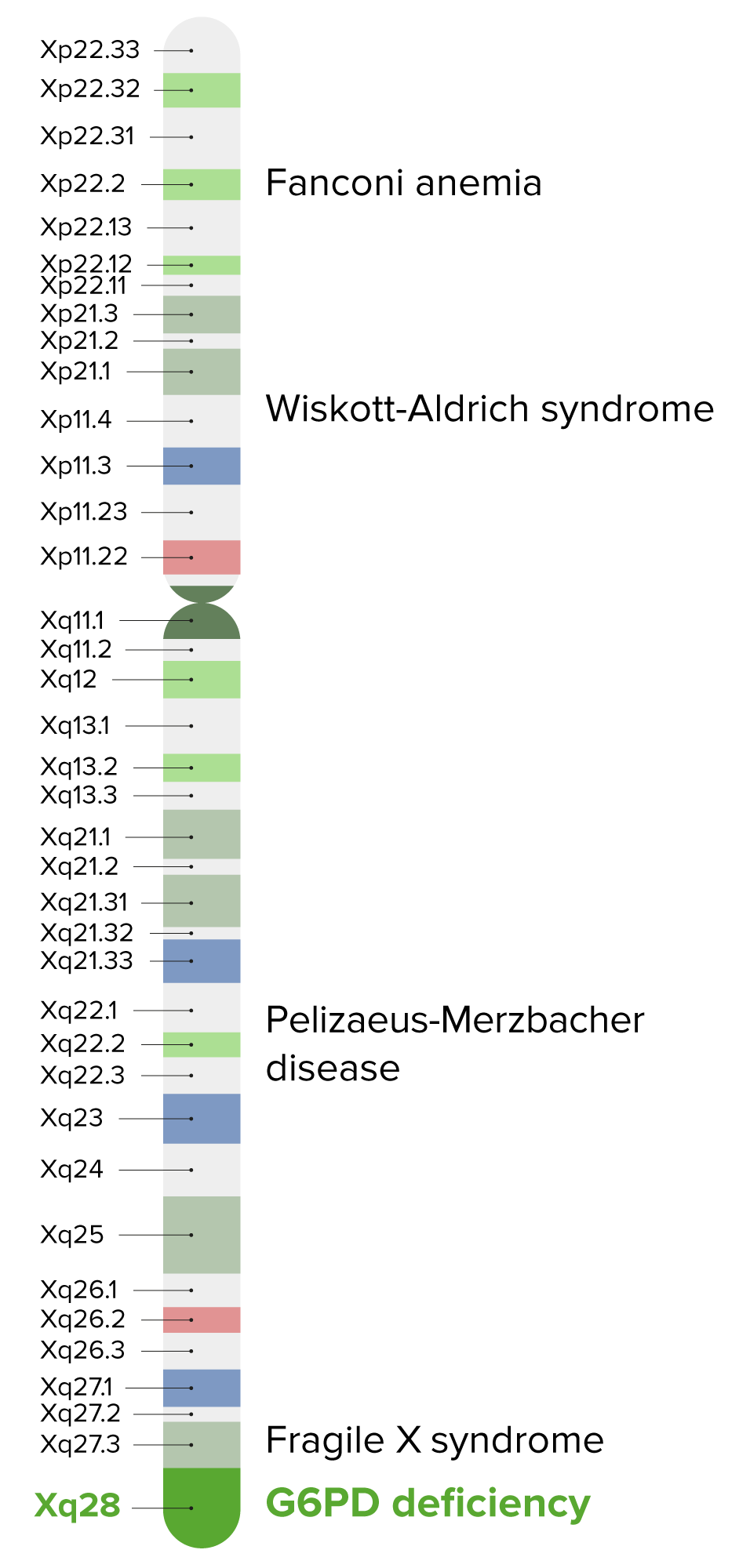Playlist
Show Playlist
Hide Playlist
G6PD Deficiency: Clinical Pathology
-
Slides G6PP Deficiency.pdf
-
Reference List Pathology.pdf
-
Download Lecture Overview
00:01 G6PD, most common patients, African and Mediterranean descent. 00:05 That’s important. 00:06 If it’s a male, X-linked recessive, no choice. 00:10 We are only given one X. 00:11 In a female, it could be a trait. 00:15 Please focus upon episodic, episodic, episodic hemolytic anemia. 00:20 Why? Because are you going to be eating fava beans 24 hours a day? No, I hope not. 00:27 So it’s only after exposure to that free radical is when you have the hemolytic anemia, is that clear? So you want to be very careful. 00:35 Know as to how to dissect certain terms. 00:40 Episodic is huge. 00:42 So when you have episodic hemolytic anemia, you’re going to have pallor, fatigue and jaundice, infection, oxidized drugs. 00:47 Take a look at these, antimalarials, sulfonamides, nitrofurans, and fava beans. 00:54 What is this? Population: Mediterranean.
About the Lecture
The lecture G6PD Deficiency: Clinical Pathology by Carlo Raj, MD is from the course Hemolytic Anemia – Red Blood Cell Pathology (RBC).
Included Quiz Questions
Which of the following descents have a higher prevalence of glucose-6-phosphate dehydrogenase deficiency?
- African and Mediterranean
- African and Latin American
- Caucasian and Mediterranean
- Caucasian and Latin American
- Latin American and Mediterranean
Which of the following is LEAST associated with hemolysis in glucose-6-phosphate dehydrogenase deficiency?
- Lisinopril
- Chloroquine
- Trimethoprim-sulfamethoxazole
- Fava beans
- Infection
Which of the following cells is most characteristic of glucose-6-phosphate dehydrogenase deficiency?
- Bite cell
- Schistocyte
- Spherocyte
- Burr cell
- Elliptocyte
Customer reviews
5,0 of 5 stars
| 5 Stars |
|
5 |
| 4 Stars |
|
0 |
| 3 Stars |
|
0 |
| 2 Stars |
|
0 |
| 1 Star |
|
0 |




